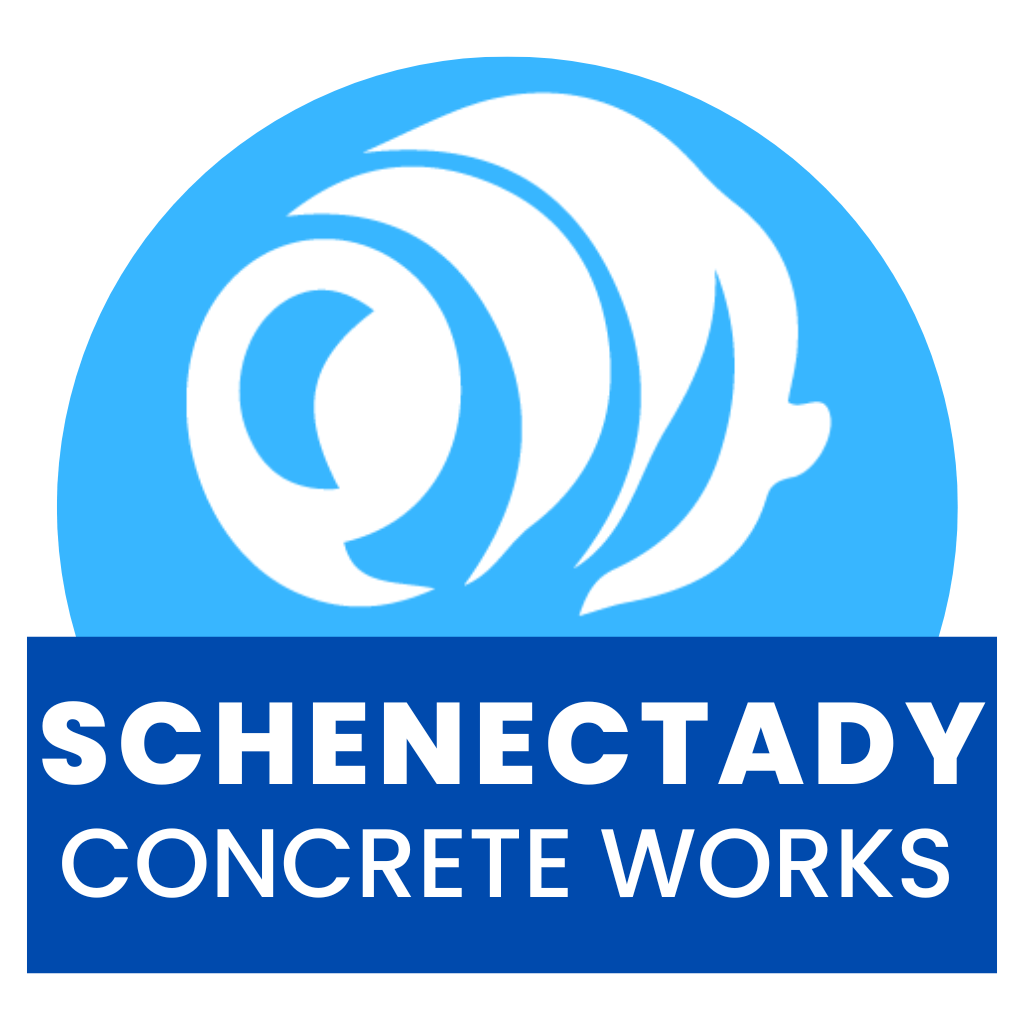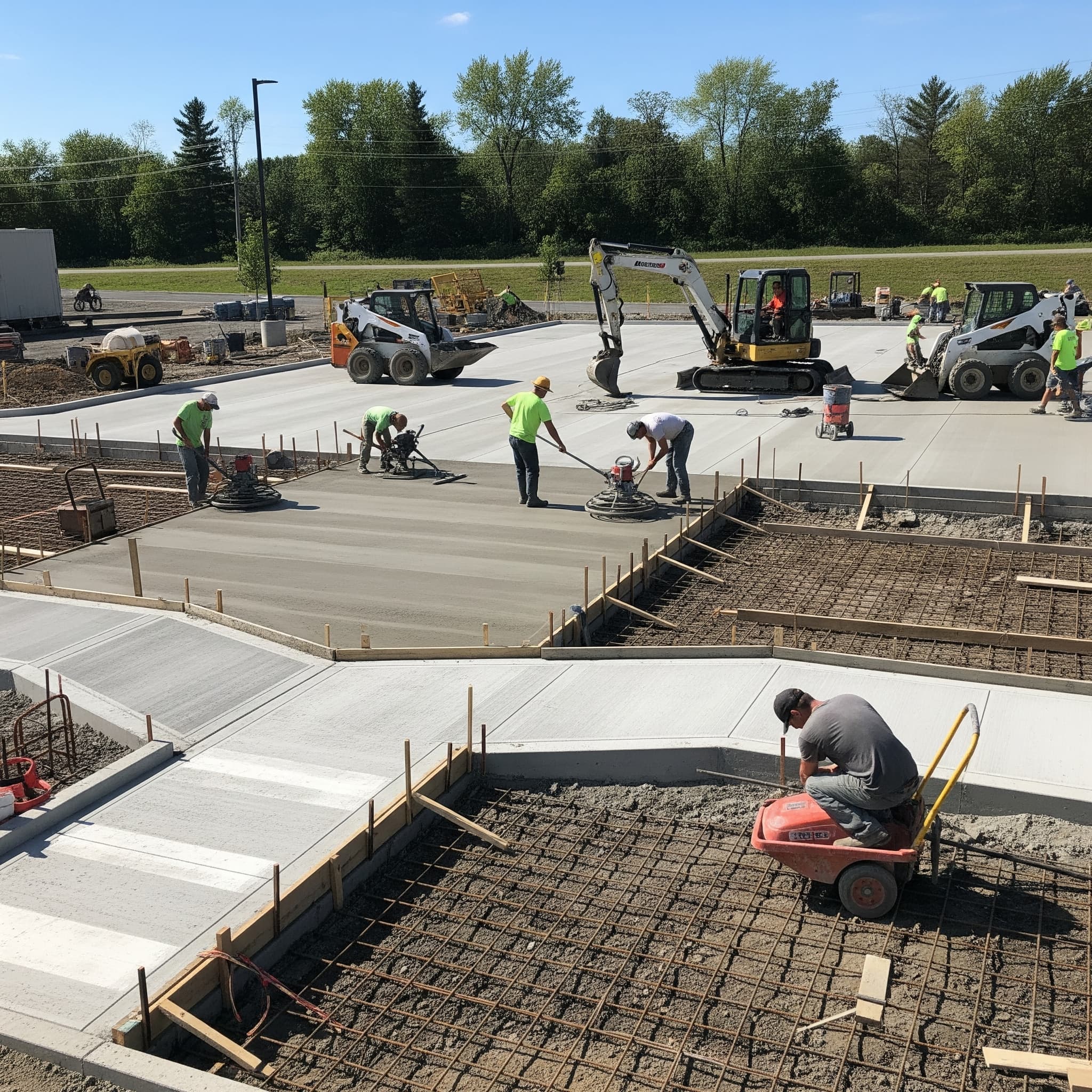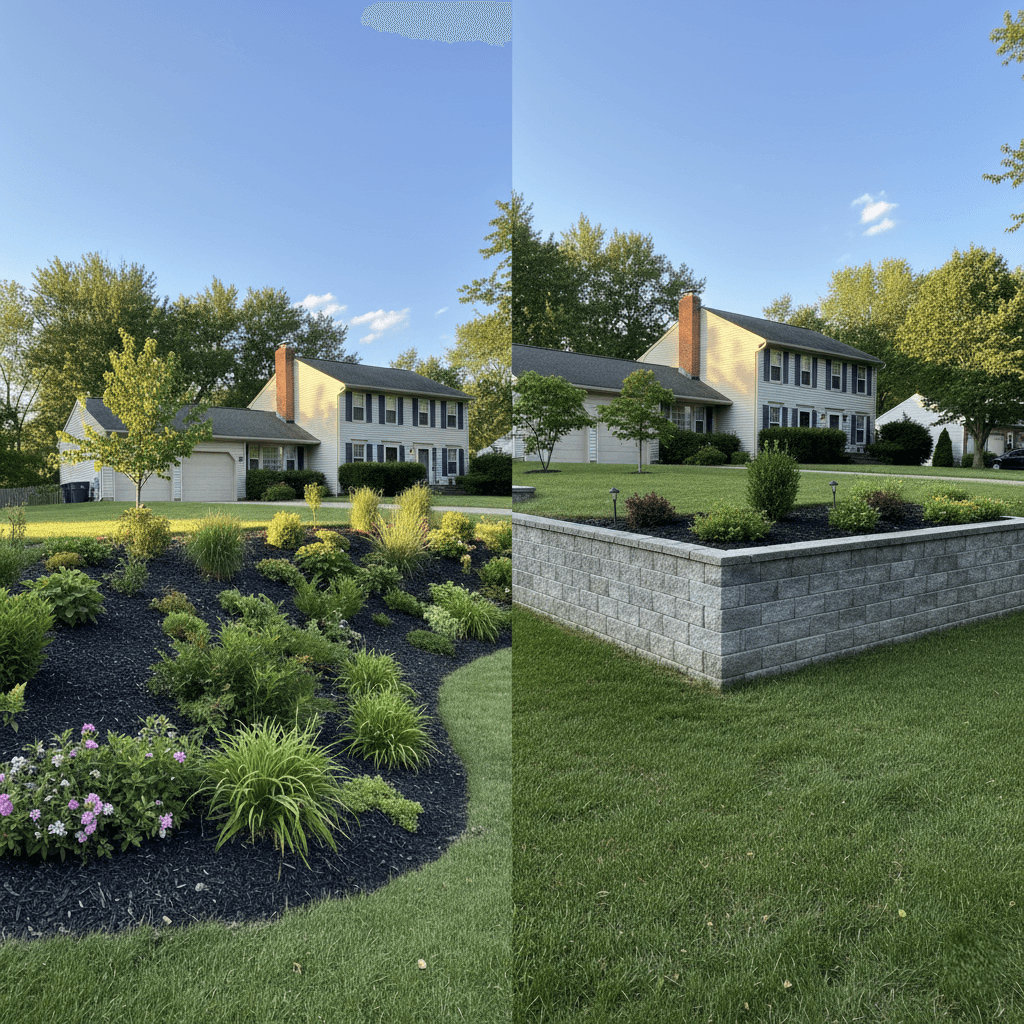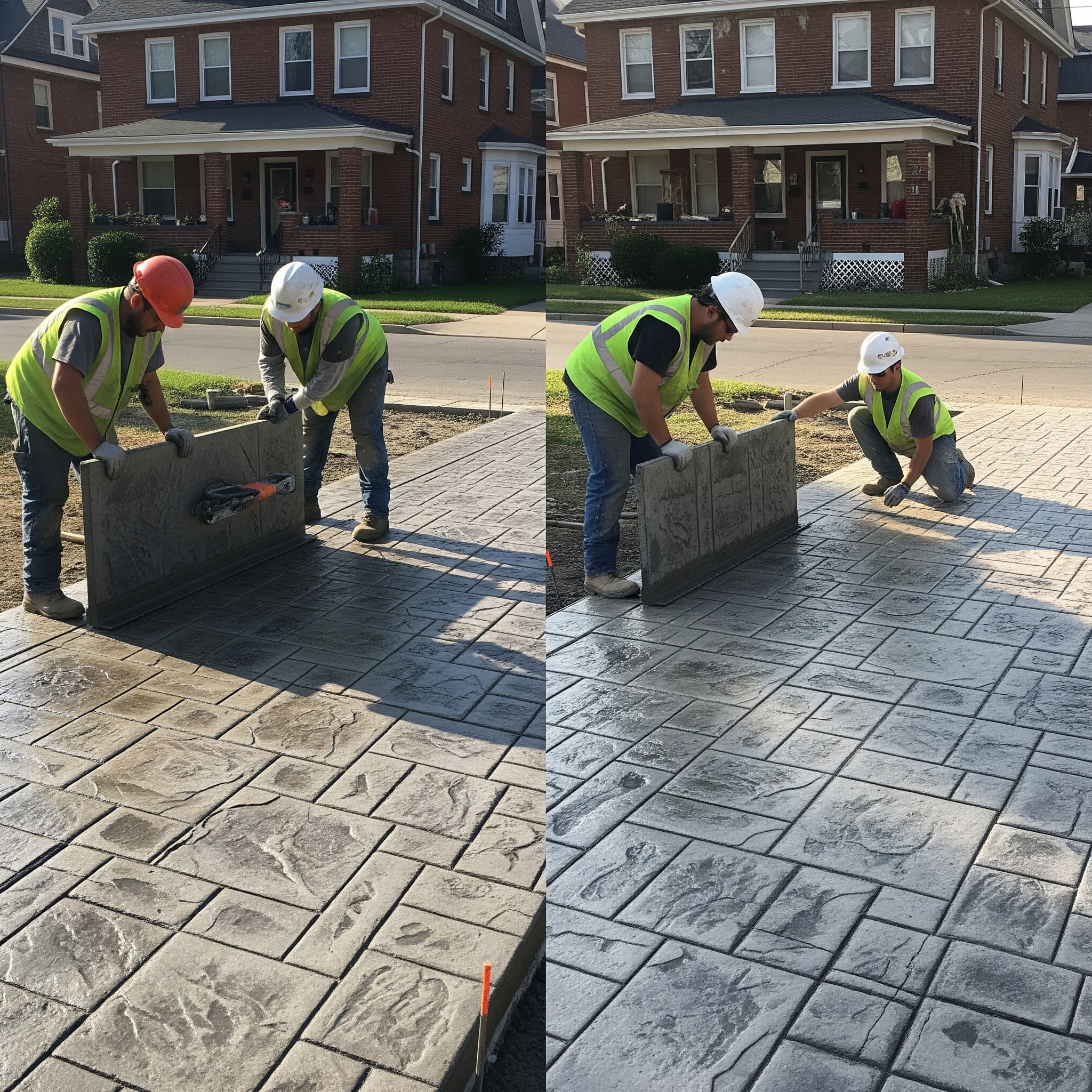
Concrete Pouring & Curing in Schenectady: Cold Weather Tips
Pouring Concrete Schenectady
Schenectady’s harsh winters present unique challenges for concrete projects, with temperatures regularly dropping below freezing from December through March. Understanding how cold weather impacts pouring concrete becomes crucial for local homeowners and contractors planning construction during winter months. Temperature fluctuations between 16°F and 41°F throughout winter affect chemical reactions essential for proper concrete strength development. Professional techniques and specialized equipment help ensure successful concrete installations despite challenging weather conditions. Proper planning prevents costly delays and ensures long-lasting results regardless of seasonal limitations.
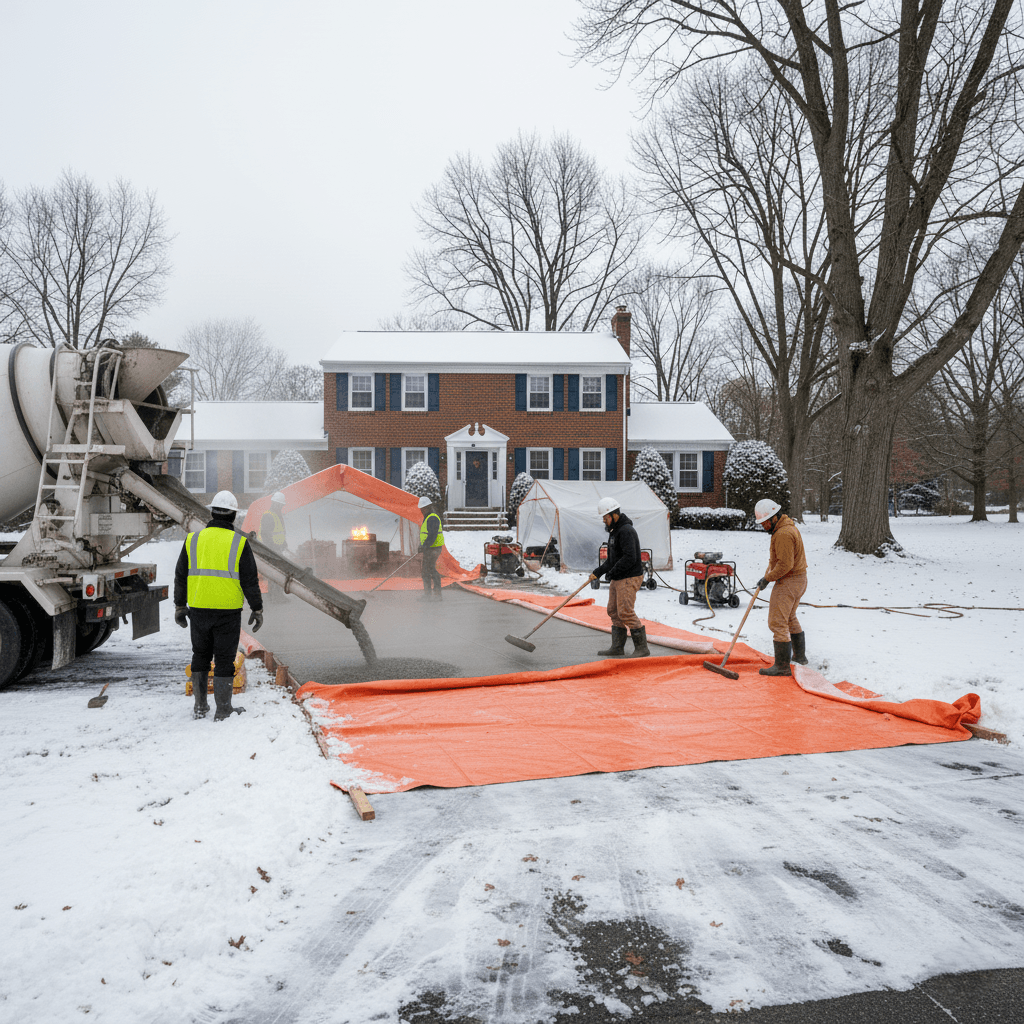
Understanding Cold Weather’s Impact on Concrete Chemistry
Cold temperatures significantly slow the hydration process that transforms liquid concrete into solid, durable material. Chemical reactions between cement and water operate optimally between 50°F and 60°F, but nearly cease when temperatures drop below 40°F. Schenectady’s average January temperatures of 16.9°F to 28.6°F create challenging conditions that require specialized approaches for successful concrete placement.
When concrete freezes before achieving sufficient strength, water expansion can cause permanent damage, reducing final strength by up to 50%. The critical period occurs during the first 24 to 48 hours after pouring concrete, when proper temperature maintenance becomes essential. Understanding these chemical processes helps contractors and homeowners make informed decisions about winter concrete projects.
Critical Temperature Thresholds for Concrete Success
Concrete must maintain temperatures above 40°F during the initial curing period to develop adequate strength. Professional standards recommend keeping concrete temperatures at 50°F or higher for the first 48 hours after placement. Once concrete achieves 500 PSI compressive strength, typically within two days under normal conditions, it becomes much more resistant to freeze damage.
Temperature monitoring throughout the curing process ensures proper strength development and prevents costly failures. Properties near Union College and downtown Schenectady require careful attention to microclimate conditions that can affect concrete temperature differently than regional weather reports indicate.
Pre-Pour Preparation Strategies for Winter Projects
Successful winter concrete projects begin with comprehensive preparation addressing ground conditions, materials, and equipment. Frozen ground must be thawed using heaters before pouring concrete, as frozen surfaces cause rapid heat loss and can lead to settling problems when the spring thaw occurs. Ground preparation typically requires 24 to 48 hours of heating, depending on soil conditions.
Hot water mixing becomes essential for achieving proper concrete temperatures during winter pours. Ready-mix suppliers typically deliver concrete at 65°F, but heat loss during transport requires careful timing and insulation strategies. Storing aggregates and cement in heated areas before mixing helps maintain optimal temperatures throughout the process.
Site Preparation and Equipment Considerations
Windbreaks protect fresh concrete from rapid temperature drops and moisture loss caused by winter winds common along the Mohawk River. Heated enclosures provide controlled environments for larger projects, ensuring consistent temperatures during curing periods. Equipment storage in heated areas prevents tools and forms from becoming too cold, which can shock fresh concrete and affect quality.
Scheduling becomes critical during the winter months, with weather forecasts determining optimal pouring windows. Projects near Central Park and elevated areas of Schenectady may experience different conditions than river-level locations, requiring site-specific weather monitoring for successful outcomes.
Concrete Mix Modifications for Cold Weather Performance
Winter concrete mixes require specific adjustments to compensate for cold-weather challenges. Accelerating additives speed chemical reactions, reducing setting times and achieving strength more quickly in cold conditions. However, calcium chloride accelerators should be avoided when using steel reinforcement, as they can cause corrosion problems over time.
Air entrainment becomes particularly important in Schenectady’s freeze-thaw climate, creating microscopic air pockets that accommodate ice expansion without damaging the concrete structure. Lower slump concrete with reduced water content minimizes bleeding and decreases setting time, providing better cold-weather performance. Specifying appropriate cement types and admixtures ensures optimal results despite challenging temperatures.
Professional Mix Design Considerations
Experienced concrete suppliers adjust mix designs based on anticipated weather conditions and project requirements. Higher cement content generates more hydration heat, helping maintain proper temperatures during curing. Special cold-weather admixtures provide frost protection without compromising long-term durability or strength characteristics.
Local suppliers serving the Stockade District understand regional climate challenges and provide mixes specifically designed for Capital Region conditions. Working with knowledgeable suppliers ensures appropriate material selection for specific project requirements and weather conditions.
Protection Methods During the Curing Process
Insulated concrete blankets provide essential thermal protection during the critical curing period. These specialized covers trap hydration heat while preventing rapid temperature loss, maintaining optimal conditions for strength development. Blanket systems must remain in place for minimum periods depending on temperature conditions and concrete requirements.
Heated enclosures offer comprehensive protection for larger projects, creating controlled environments that eliminate weather variables. Enclosures must be windproof and waterproof, with adequate ventilation to prevent carbonation from heating equipment. Steam injection maintains humidity levels while providing additional heat, particularly beneficial during extended curing periods.
Temperature Monitoring and Documentation
Continuous temperature monitoring ensures concrete maintains proper conditions throughout the curing process. Digital thermometers and infrared devices provide accurate readings, helping contractors make informed decisions about protection measures. Documentation of temperatures and weather conditions creates valuable records for quality control and future project planning.
Temperature logs help identify patterns and potential problems before they become critical. Many successful contractors maintain detailed records of winter projects, building databases of effective strategies for specific weather conditions and project types common in the Schenectady area.
Common Winter Pouring Challenges and Solutions
Delivery timing becomes critical during winter projects, as concrete temperature drops approximately one-fourth of the difference between concrete and air temperature per hour of transport. Coordinating with suppliers ensures concrete arrives at optimal temperature, minimizing heat loss before placement. Rapid placement and immediate protection prevent temperature loss during finishing operations.
Extended setting times in cold weather can delay finishing operations, requiring flexible scheduling and adequate lighting for potential evening work. Contractors must balance weather windows with project requirements, sometimes adjusting scope or timing to ensure successful outcomes. Communication between all parties becomes essential for coordinating winter concrete projects effectively.
Quality Control in Cold Weather Conditions
Testing procedures require modifications during cold weather to account for slower strength gain and extended protection periods. Cylinder samples must be protected similarly to the main pour, ensuring test results accurately represent actual concrete performance. Field testing equipment may require calibration adjustments for cold-weather operation.
Visual inspection techniques help identify potential problems early in the process. Surface cracking, color changes, or finishing difficulties often indicate temperature-related issues that require immediate attention. Properties throughout Schenectady’s historic neighborhoods may have specific aesthetic requirements that demand careful attention to cold-weather finishing techniques.
Economic Considerations for Winter Concrete Projects
Winter concrete projects typically cost 10-30% more than similar work during moderate weather due to additional materials, labor, and equipment requirements. Heating costs, specialized materials, and extended protection periods contribute to higher overall expenses. However, scheduling flexibility during winter months may provide cost savings through reduced competition and contractor availability.
Emergency heating equipment rental, additional labor for temperature monitoring, and extended project timelines affect project budgets. Planning these costs upfront prevents surprises and ensures adequate resources for successful completion. Many contractors offer winter pricing schedules that account for additional requirements while remaining competitive.
Seasonal Planning and Project Timing
Optimal concrete pouring windows in Schenectady occur during late spring through early fall, when temperatures consistently remain above 40°F. However, winter projects remain viable with proper planning and protection measures. Understanding seasonal weather patterns helps schedule projects during favorable conditions while maintaining flexibility for urgent repairs.
Long-range weather forecasting helps identify suitable windows for winter concrete work. Contractors often monitor extended forecasts to schedule projects during brief warming periods or plan protection strategies for sustained cold spells. Properties near Proctor’s Theater and other downtown locations may benefit from urban heat island effects that provide slightly warmer microclimates.
Best Practices for Schenectady Winter Projects
Successful winter concrete projects require comprehensive planning, appropriate materials, and dedicated monitoring throughout the curing process. Working with experienced local contractors familiar with regional climate conditions ensures proper techniques and protection measures. Planning allows adequate time for material procurement, equipment rental, and weather monitoring necessary for winter success.
Communication between property owners, contractors, and suppliers becomes critical during winter projects. Weather-related delays or modifications require flexibility from all parties to ensure successful outcomes. Understanding cold-weather limitations helps set realistic expectations while maintaining quality standards throughout challenging conditions.
At Schenectady Concrete Works, we specialize in winter concrete projects and understand the unique challenges facing local property owners during cold weather months. Our experience with regional climate conditions and proven cold-weather techniques ensures the successful pouring of concrete projects regardless of seasonal challenges, delivering quality results that withstand our harsh Capital Region winters.
